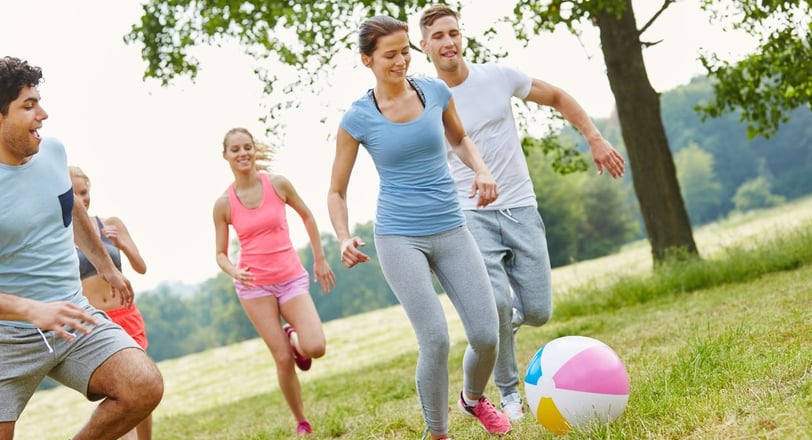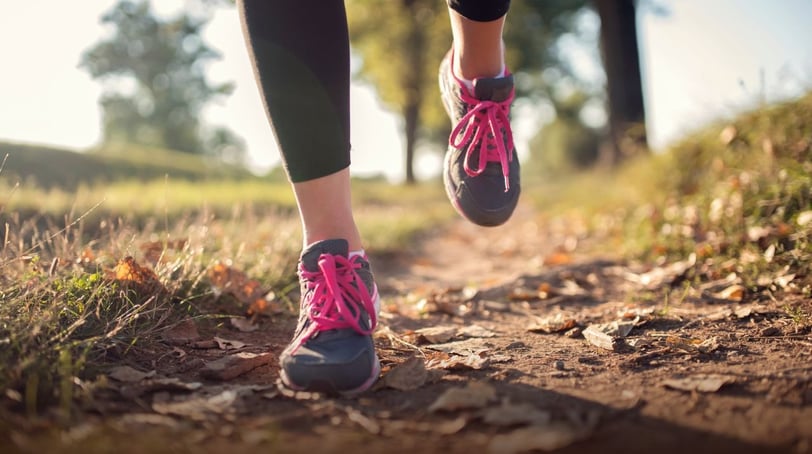The Joy of Movement: Incorporating Physical Activity into Everyday Life
Imagine if staying active didn’t feel like a chore. What if movement could be a source of joy, relaxation, and energy? The truth is, physical activity is about more than just workouts or gym routines—it’s about finding ways to move your body that feel good and fit naturally into your daily life. Whether you’re a seasoned fitness enthusiast or just starting out, this article will explore practical ways to incorporate movement into your everyday routine. From walking to stretching, you’ll discover how to stay active and enjoy the process, no matter your age or fitness level.


Why Movement Matters
Physical activity isn’t just for weight management or muscle building—it’s essential for overall health and well-being. Here’s why:
Improved Physical Health
Movement strengthens your heart, improves lung capacity, and boosts circulation. It helps maintain a healthy weight, reduces the risk of chronic diseases, and enhances flexibility and strength.Mental Well-Being
Regular movement releases endorphins, which act as natural mood boosters. It can reduce stress, anxiety, and symptoms of depression, while improving focus and mental clarity.Increased Energy
It might sound counterintuitive, but expending energy through movement actually boosts your overall energy levels by improving oxygen flow and metabolism.Better Sleep
People who stay active tend to fall asleep faster and enjoy deeper, more restorative rest.
Incorporating Movement into Everyday Life
Making physical activity a part of your daily routine doesn’t require a gym membership or hours of free time. Here are some practical, enjoyable ways to stay active:
1. Walk Whenever You Can
Walking is one of the simplest and most effective forms of exercise.
Take Short Walks: Break up long periods of sitting with 5–10-minute walks.
Use Active Transportation: Walk or cycle to nearby destinations instead of driving.
Explore Nature: Plan weekend hikes or strolls in parks to combine movement with relaxation.
Step it Up: Use stairs instead of elevators for an easy cardio boost.
2. Stretch and Move During Breaks
Stretching improves flexibility, reduces tension, and keeps your body feeling good.
At Work: Take 2-minute stretch breaks every hour. Focus on your neck, shoulders, and back.
At Home: Stretch while watching TV or cooking dinner.
Morning Routine: Start your day with a gentle full-body stretch to wake up your muscles.
3. Make Chores an Opportunity for Movement
Household tasks can double as a workout:
Vacuuming and Sweeping: Engage your core and take brisk, purposeful movements.
Gardening: Digging, weeding, and planting are great for strength and flexibility.
Carrying Groceries: Treat grocery bags as weights for a quick arm workout.
4. Dance Like Nobody’s Watching
Dancing is a fun, heart-pumping activity that improves coordination and releases feel-good hormones.
Solo Sessions: Blast your favorite music and dance in your living room.
Group Classes: Try Zumba, salsa, or hip-hop for a social spin on fitness.
Family Fun: Turn chore time into a dance party with your kids or partner.
5. Try Desk Workouts
If you spend a lot of time sitting at a desk, these small movements can make a big difference:
Seated Leg Raises: Lift and hold one leg at a time for a core-strengthening mini workout.
Chair Dips: Use a sturdy chair to do tricep dips.
Wrist Stretches: Relieve tension by stretching your wrists and fingers periodically.
6. Embrace Playfulness
Incorporating movement doesn’t have to feel like “exercise.”
Play with Kids or Pets: Run around, throw a ball, or play tag.
Join Games: Try frisbee, pickleball, or backyard badminton for light-hearted fun.
Try New Activities: Explore activities like roller skating, martial arts, or paddleboarding.
7. Incorporate Yoga or Tai Chi
These practices are gentle on the body but powerful for strength, flexibility, and relaxation.
Online Classes: Follow free videos on YouTube for guided sessions.
Community Groups: Many parks and community centers offer beginner-friendly classes.
Adapting Movement to Your Fitness Level
Physical activity should always be tailored to your abilities and comfort level. Here’s how to adapt:
For Beginners
Start small: Aim for 10–15 minutes of light activity daily.
Choose low-impact activities like walking, swimming, or stretching.
Celebrate small wins to stay motivated.
For Seniors or Those with Limited Mobility
Focus on chair exercises, gentle yoga, or water aerobics.
Prioritize balance exercises to prevent falls.
Move at your own pace, and consult a doctor if needed.
For the More Active
Mix it up with activities like cycling, hiking, or strength training.
Add intensity through intervals or longer sessions.
Challenge yourself with new skills like rock climbing or martial arts.
Making Movement a Habit
Staying consistent is key to reaping the benefits of physical activity. Here are some tips:
Set a Routine: Incorporate movement into your daily schedule, like a morning walk or evening stretch.
Make it Social: Join a group or find a workout buddy to stay motivated.
Track Your Progress: Use a journal or app to monitor your activity and celebrate milestones.
Reward Yourself: Treat yourself to a small reward after meeting your movement goals.
Common Questions About Everyday Movement
Q: Can small amounts of movement really make a difference?
A: Absolutely! Even light activity, like walking or stretching, improves circulation, boosts energy, and enhances mood.
Q: How can I stay active if I’m really busy?
A: Fit movement into your existing routine. For example, walk while taking phone calls, do quick stretches at your desk, or combine exercise with social time by walking with friends.
Q: Is it okay to skip intense workouts?
A: Yes! Movement doesn’t have to be intense to be beneficial. Focus on consistency and finding activities you enjoy.
Conclusion
The joy of movement lies in its simplicity and accessibility. By incorporating small bursts of activity into your daily life, you’ll boost your physical health, mental well-being, and overall happiness.
Whether it’s a morning walk, a mid-day stretch, or an impromptu dance session, find what brings you joy and keep moving. Share this guide with friends and family to inspire a community that celebrates the beauty of everyday movement.


Products Reviews
Disclaimer
The statements on this website have not been evaluated by the Food and Drug Administration. The articles and products advertised are not intended to diagnose, treat, cure, or prevent any disease.
The content of the website and the products advertised are based on the opinions of the authors and are provided solely on an "AS IS" and "AS AVAILABLE" basis. You should do your own research and confirm information with other sources when seeking information about health issues, and always carefully review the information with your healthcare professional before using any of the protocols presented on this website and/or the products indicated. Neither Drops&Pills nor the authors are engaged in rendering medical or similar professional services or advice through this website or the products, and the information provided is not intended to replace medical advice offered by a physician or other licensed healthcare professional. You should not construe the recommendation of the products by Drops&Pills as an endorsement by Drops&Pills of the opinions expressed herein, or any guarantee of any strategy, recommendation, treatment, action, or application of advice made by the authors of the products.
Some names and personally identifiable information on this site have been changed to protect the privacy of individuals.
Drops&Pills is the publisher of the articles on this site. Drops&Pills' role as publisher does not constitute an endorsement, approval or review of the products advertised herein or any claim, statement or opinion used in the promotion of those products.
For product support, please contact the suppliers.
For purchase and order support, please contact the platform you placed the order through.
For support with article information, please contact Drops&Pills here.
*Free shipping according to the rules on the product page.
Natural Products for Better Health
© Drops&Pills Research 2025 All rights reserved
Contacts
contact@dropsandpills.com
